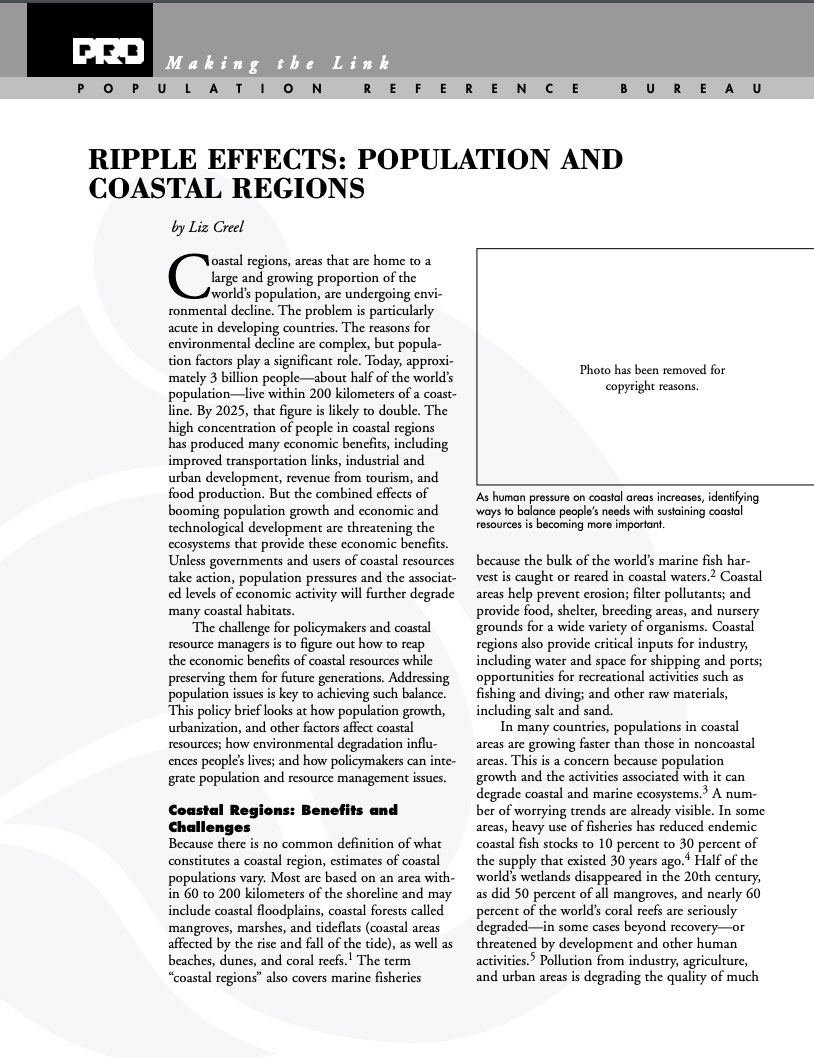Project: Supporting Population Evidence and Champions in Africa (SPEC)
Harnessing the Demographic Dividend in Ethiopia
Ethiopia, with a current population of about 100 million, has achieved gains in several major health indicators.

Project: Supporting Population Evidence and Champions in Africa (SPEC)
Ethiopia, with a current population of about 100 million, has achieved gains in several major health indicators.

(2003) Coastal regions, areas that are home to a large and growing proportion of the world's population, are undergoing environmental decline.

A PRB analysis finds that workers in one of the hardest-hit sectors—food preparation and server-related occupations—are among the most economically vulnerable.
(2010) There is an urgent need for stronger links between family planning/reproductive health and HIV policies, programs, and services.

The Census counts every person who usually lives in the United States. They don’t have to be a U.S. citizen, but they do have to call this country their primary home.
(2000) Latvia, Estonia, and Lithuania are in the midst of a transition to independence after nearly 50 years of domination by the Soviet Union. Some of the first laws passed by the newly independent governments placed strict limits on who could become a citizen and actively promoted use of the native languages.
(2009) Population trends since 2000 suggest that states in the South and West will gain additional seats in the U.S. House of Representatives after the 2010 Census.
(2010) The State of Metropolitan America, by the Brookings Institution's Metropolitan Policy Program, identifies five demographic trends and developments that dominated the first decade of the 2000s in the 100 largest metro areas of the United States.